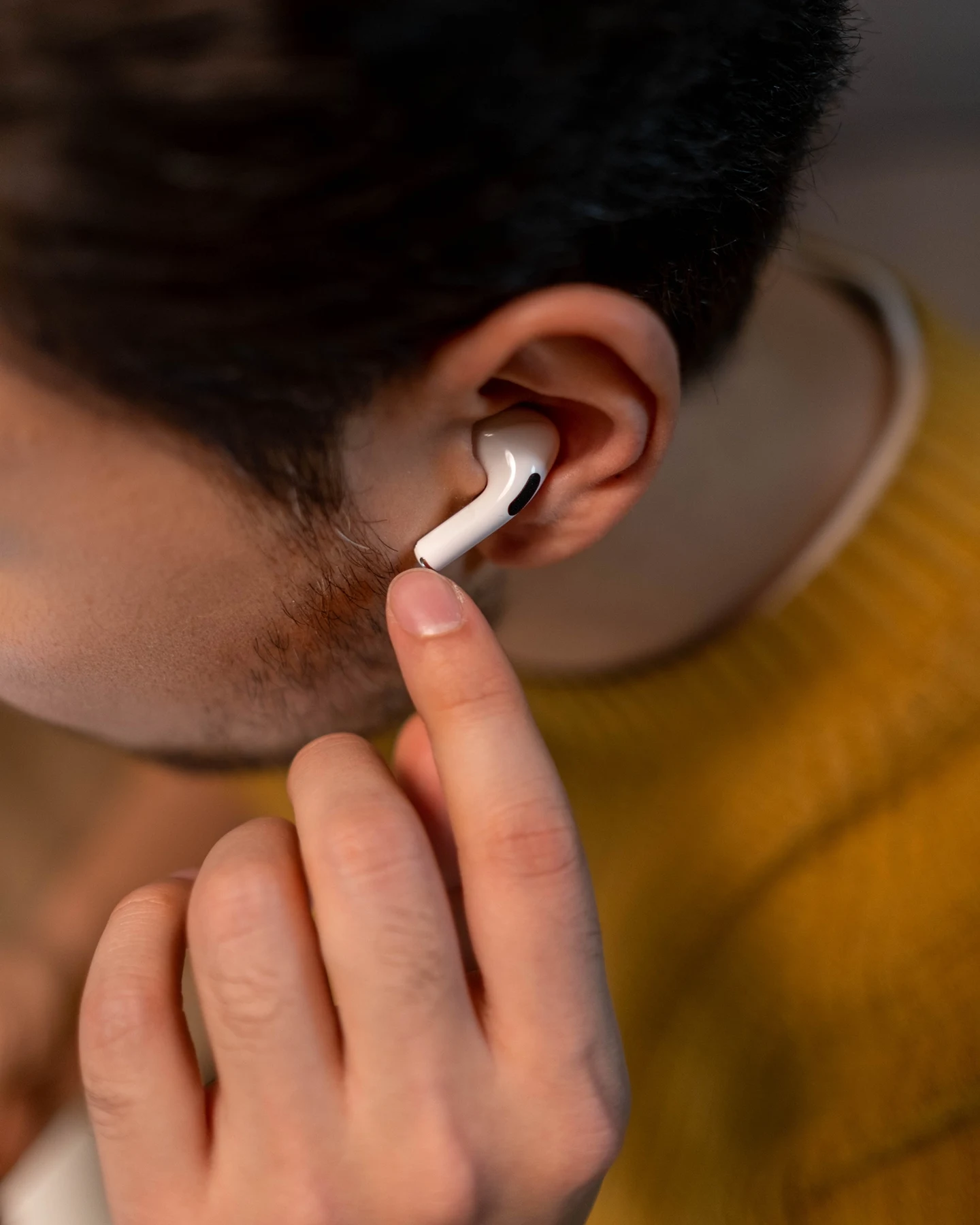Mandatory vaccination for military personnel is denied by a federal judge
Judge Reed O'Connor, a U.S. District Court judge, issued an injunction against the Biden administration's requirement that military personnel receives vaccines on Monday.
Judge O'Connor imposed a preliminary injunction (PI) prohibiting the Navy from acting against 35 Navy Seals who filed a lawsuit seeking a religious exemption from the COVID-19 vaccine mandate.
According to NBC, a biology instructor in Nassau County, New York, was arrested on December 31 for giving a single dosage of Johnson & Johnson (J&J) vaccine to a 17-year-old boy.
According to a civic notice issued by the Nassau County Police Department (NCPD), defendant Laura Parker Russo, 54, injected a 17-year-old male with COVID-19 vaccination.
Upon returning home, the male victim informed his mother of the incident. The mother had not granted consent or authority for her son to be injected with a COVID Vaccine and had contacted the NCPD," the NCPD stated in a statement.
According to Johns Hopkins University, there have been over 294.1 million verified COVID-19 cases worldwide, with over 5.4 million deaths.
More than 56.6 million confirmed cases and more than 828,000 deaths have been reported in the United States.
According to the Centers for Disease Control and Prevention (CDC), more than 243.5 million people in the United States have gotten their first COVID-19 vaccination dosage, with more than 205.8 million fully vaccinated. More than 68 million people have received a booster dosage.
1/4/22 1:37 p.m. PST—The United States sets a new daily record for COVID-19 cases.
According to Johns Hopkins University data, the United States reported more than one million new illnesses on Monday – a record level for a single day.
According to UPI, this is nearly double the previous record of 590,000 instances recorded four days ago, with Maryland, Alabama, Delaware, New Jersey, and Ohio reporting the newest COVID-19 infections per 100,000 population.
According to the most recent available statistics from the Centers for Disease Control and Prevention (CDC), the Delta variation accounted for over 40% of cases and Omicron for roughly 60% of all infections in the United States.

Pexel photo. Information source: Healthline
Chief Daddy 2: Going for Broke, full Reviews
I'm going to give a brief and candid evaluation of this film, but first, let's applaud the producer for selecting an excellent cast. That was a film brimming with talent and Nollywood's most prominent stars, and as such, we all expected more. Nonetheless, will I call this film a wonderful film? Definitely not.
The first part of the film was ok, but the second part is simply confusing. I'm not going to write much about the film because you've probably already seen the reviews online, but here's how I felt while viewing it.
Individuals who develop age-related macular degeneration (AMD), cataracts, or diabetes-related eye disease (DRED) may be at an increased risk of dementia, according to a study published in the British Journal of Ophthalmology on Sept. 13, 2021.
The researchers collected health data on around 12,000 persons aged 55 to 73 and then followed them for up to 15 years, noting who had dementia or age-related eye disorders. They discovered that individuals with AMD had a 26% increased risk of dementia, those with cataracts had an 11% increased risk, and those with DRED had a 61% increased risk. Glaucoma, on the other hand, was not connected with an increased risk of dementia.
Dementia and hearing loss may be connected. What you should know about this subject is as follows.
Dementia and hearing loss: is there a connection? In recent years, researchers have been working feverishly to find an answer to this question.
"A number of studies have found a correlation between hearing loss and cognitive decline," says Dr. Elliott Kozin, an assistant professor of otolaryngology-head and neck surgery at Harvard Medical School.
While the two appear to be related, experts caution that it is too early to determine whether hearing loss is driving cognitive deterioration.
"As the statistics adage goes, 'association does not imply causation,'" explains Dr. Kozin, a Massachusetts Eye and Ear specialist who specializes in the examination and treatment of complicated ear disorders. "It is possible that there are additional or several unknown risk factors for both hearing loss and cognitive decline." One of those things could be the source of both issues.
Even if a link has not been shown, it is critical to get checked if you detect indicators that your hearing may be less sensitive than it used to be. There is already abundant evidence that hearing impairments have a detrimental effect on one's social relations and overall quality of life. Simple remedies may be beneficial.
Investigating the connection
There are several possible explanations for why hearing loss and brain alterations may be connected.
To begin, when you have poor hearing, you may have difficulty communicating with people, which may have an effect on your social life. This absence of interaction may have a detrimental effect on your quality of life and cognitive processing, according to Dr. Kozin.
All of these factors are believed to play a role in the development of disorders such as depression and dementia," he explains.
It's also possible that hearing loss has an effect on the brain's physical structure, he says. This, in turn, may increase the brain's susceptibility to the type of damage seen in persons with Alzheimer's disease.
A risk factor that is modifiable?
For two reasons, this potential link between hearing loss and brain alterations has attracted researchers' interest.
To begin, dementia is an increasing problem in the United States due to the aging population and an effort to find modifiable risk factors.
The concept is that by identifying the factors that contribute to an illness such as dementia, we can intervene early and potentially prevent, slow, or even reverse the progression of the disorder. Dr. Kozin explains. If hearing loss alters the brain, for example, equipping someone with a hearing aid may avert cognitive deficits.
"This is a busy area of research, and the National Institutes of Health is substantially supporting it," Dr. Kozin explains. "What is normally required are high-quality prospective longitudinal studies comparing two groups of people, those with and without hearing loss, to establish whether they develop illnesses such as dementia. Individuals may be given hearing aids as part of these studies to investigate if they reduce the chance of developing disorders such as dementia. These studies are difficult to conduct because they require a large number of people who are closely monitored over an extended period of time."
Second, if hearing loss is a sign of dementia, it may aid doctors in detecting the disease earlier. The goal is that it will one day be utilized to aid in the diagnosis of dementia, according to Dr. Kozin.
It is far too early to determine whether either of these is true, but researchers expect to have an answer someday.
Athletes competing in this year's National Senior Games discuss their strategies for staying fit, healthy, and motivated.
This year, competitors over the age of 50 from throughout the country will convene in Fort Lauderdale, Fla., for the National Senior Games (NSG), the world's largest multi-sport event for seniors.
This biennial event has 20 Olympic-style events including outstanding amateur athletes. These "super seniors" are from a variety of different backgrounds. Many have spent decades training in their sport, while others have returned following a lengthy hiatus. A handful has resumed their endeavors only recently.
Despite this, they encounter the same hurdles as you do: finding inspiration, overcoming injuries and setbacks, and determining the ideal training regimens to accomplish their goals. Three accomplished athletes were interviewed about what they've learned along the way - and what you can learn from them.
Philipp Djang, swimming
Djang, 66, has 34 gold and eight silver medals to his name and has set 21 NSG records in four age divisions.
Every day, move. Daily, do something that exhausts you. I make exercise a daily ritual, similar to brushing my teeth. Additionally, it does not have to be the same activity every time, as variety is the spice of life.
Locate a village. I get a lot of joy and happiness from seeing my pals at the pool and gym. When a group of people has a common experience, the shared link has a synergistic effect on the group and can serve as the foundation for lifelong friendships.
Recognize the differences between types of pain. There are numerous forms and severity degrees of pain. The best type of pain is the burn that results from attempting as hard as possible. A severe pain, such as a sprain, feels quite different. Distinguishing between them and determining how far you can safely push yourself is a necessary aspect of gaining a greater understanding of how your mind and bodywork.
Alternate your workouts. Periodization is critical to my training. [Periodization is the process of altering variables during exercises in order to maximize performance and keep the body challenged.] For example, I vary the distance and intensity of my swims — fast, short swims to develop speed and long, slow swim to work on technique.
Love what you do. I establish competition goals and occasionally accomplish them. However, if I do not, that is fine, and there is no need for me to stop doing what I enjoy. To begin, always do something that makes you feel better.
Post a Comment
Valentine's Day is one of our most anticipated days. You may be planning a date with your partner or buddies. It's crucial to look your best on this special day. We've rounded together the best Valentine's Day makeup looks. It could be a favorite hairstyle or a new look. We have the perfect makeup look for Valentine's Day 2022. We have valentines makeup looks to assist you to win your loved one's heart.
This Valentine's Day, try out new makeup looks. YES MADAM can also boost your glam factor. You may also maintain your natural beauty by wearing minimal makeup.
Dark lipstick with smoky eyes
The ideal party makeup look for a dinner date is smoky eyes and dark lipstick. Dark lipstick can be used to highlight the cupid's bow. Use your imagination to create a smokey effect with your eye. Take a risk and opt for a dark, lush lip look. To increase the glam factor of this party makeup look, use a highlighter.

Concentrate on the Lip

7 superfoods that you should consume for a healthy vagina
Foods That Increases Lubrication
Every organ in your body – even the vagina – is affected by your diet. Without a balanced diet, the body will respond to sickness and other undesirable reactions. This may manifest as a yeast infection in the vaginal area. There are a few foods that can help maintain the pH in your vagina balanced.
Maintain a healthy vagina. These are not just for vaginal health; they benefit the entire body. However, if you are experiencing vaginal problems, this is a warning that you should seek medical attention.
The best foods contain probiotics — or beneficial bacteria. The beneficial bacteria in your vagina protect it from acquiring numerous infections. The following are seven superfoods that you should consume for a healthy vagina:
1. Greek Yogurt - Plain, unsweetened Greek yogurt includes the beneficial bacteria that your vagina requires to remain healthy. These bacteria (probiotics) are critical for mood regulation, maintaining a healthy weight, and maintaining a regulated pH level in the vagina.
2. Fish — Omega-3 fatty acids found in fish such as salmon support healthy circulation throughout the body. Additionally, a healthy blood flow benefits your sexual drive. Additionally, a recent study indicates that women who consume an omega-3-rich diet are significantly less likely to develop endometriosis than those who do not.
3. Cranberries – Are well-known for their gynecological beneficial properties, owing to their high concentration of A-type proanthocyanidins, or PAC. Due to the high sugar content of cranberry juice, many women opt for cranberry juice pills. One pill is equivalent to two 8-ounce glasses of cranberry juice. Cranberry juice benefits the vagina by regulating the pH levels.

Alcohol use disorder (AUD, usually referred to as alcoholism) is characterised by symptoms compromising the body, mind, and behaviour. A defining feature of the disorder is that the individual continues to drink despite the negative consequences of alcohol. While there is no absolute number of drinks consumed per day or amount of alcohol consumed that characterises an alcohol use disorder, there is a point at which the dangers associated with drinking considerably increase.
The following are some of the defining traits of alcoholism:
Consuming more alcohol than anticipated. Alcoholism is characterized by a loss of control over the amount consumed.
Desire to abstain from alcohol, yet incapacity to do so.
Excessive time spent acquiring, consuming, or recovering from the effects of alcohol.
Craving for or obsession with alcohol.
Alcohol-related difficulties; ignoring those problems; drinking in the face of clear dangers, including bodily harm.
Removing oneself from critical job, family, socialising and responsibilities.
Tolerance - The necessity to consume increasing amounts of alcohol in order to experience the same effects, or the ability to consume more alcohol than other people without becoming intoxicated.
Withdrawal symptoms include anxiety, sweating, shaking, difficulty sleeping, nausea or vomiting, and, in severe cases, physical convulsions and hallucinations. The individual may drink in order to alleviate or prevent such symptoms.
A person with an alcohol use disorder has developed a physical, psychological, and/or emotional dependence on alcohol. The brain adapts and endures permanent alterations in the presence of alcohol. When alcohol consumption is abruptly ceased, the body becomes unaccustomed to being alcohol-free. The internal environment undergoes dramatic alterations, resulting in withdrawal symptoms.
Excessive alcohol use has been linked to a wide range of psychological, interpersonal, social, economic, and physical problems in the past. It may contribute to an increased risk of depression and suicide. It has been implicated in violent crimes such as homicide and domestic violence (abuse of a spouse or child). This can result in traffic accidents and even incidents involving inebriated pedestrians who choose to walk home following a night out. Additionally, AUD can result in hazardous sexual conduct, which can result in unintended pregnancy or sexually transmitted diseases.
Alcoholism raises the risk of liver disease (hepatitis and cirrhosis), heart disease, stomach ulcers, brain damage, stroke, and other health complications. There is also a risk that pregnant women who consume alcohol will have a child with foetal alcohol syndrome, a collection of health problems that include extremely low birth weight, facial abnormalities, heart defects, and learning challenges.
Alcohol use disorder is extremely prevalent.
In the United States, over 10% of males and nearly 5% of women over the age of 18 have significant drinking issues. Millions more indulge in dangerous drinking, as experts define it. Alcohol is responsible for around 88,000 deaths in the United States each year, making it the third most preventable cause of death. Approximately one-third of driving-related fatalities are caused by alcohol usage.
Subscribe to:
Posts (Atom)








